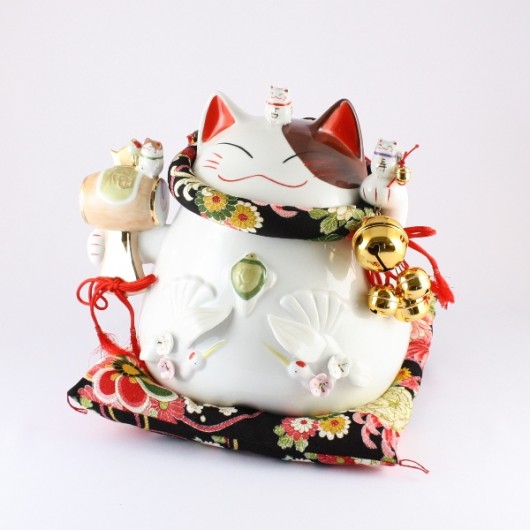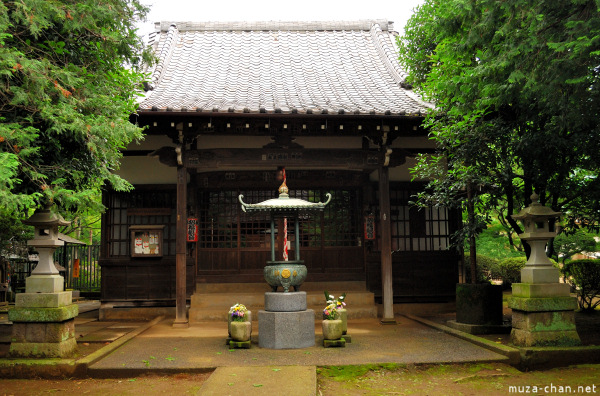Pasir Ris Downtown East
Saturday 29 December 2012
Thursday 6 December 2012
Wednesday 28 November 2012
Upcoming Event
Parklane Shopping Mall
{Nearest Mrt Station : Dhoby Ghaut}
( Infront of KFC )
12th November 2012 till 23rd December 2012
11am to 9pm
Inviting all Fans of Maneki Neko
Enjoy Great Pre-X'mas Offer
See you there !!
Sunday 28 October 2012
Upcoming Events
Upcoming Event : 26th October 2012 till 30st October 2012 - 5 Days @ 60 Airport Boulevard, Basement 1, Canteen Changi Airport Terminal 1, Time : 11am to 7pm
— at Changi Airport Terminal 1.
Upcoming Event : 31st October till 2nd November 2012 - 3 Days @ Science Foyer, Medical Drive 2, NUS LT 27, Time : 10am to 6pm Table No. 30
— at NUS 27 Medical Drive DSO Building.
— at Changi Airport Terminal 1.
Upcoming Event : 31st October till 2nd November 2012 - 3 Days @ Science Foyer, Medical Drive 2, NUS LT 27, Time : 10am to 6pm Table No. 30
— at NUS 27 Medical Drive DSO Building.
Saturday 13 October 2012
Upcoming Event
Inviting all Fans of Maneki Neko
Venue : Orchard Central Market
15th Oct 2012 to 21st Oct 2012
Held at Basement 2
See you there !!
Friday 29 June 2012
Invitation to join International Hot Soup Summit in SIM on 20th July 2012 & 21st July 2012
Siri Paradise would like to take this opportunity to cordially extend our invitation to
all our valued customers to join us in this International Upcoming Event !!
Our business partners, Mr Kimura-san & Mr Murano-san from Japan, will be in town to
participate in this International Youth Leaders Hot Soup Summit 2012 and the theme is
Transcultural & Racial Diversity hosted by SIM Global Education.
Our Organizing Committe have a collaboration with SIM International Youth Leaders and
they will be organizing an International events called the "Hot Soup Summit 2012" in SIM
this 20 - 21 July 2012.
The aim of this event is to expose all the 700 delegates (from many
different countries), invited to learn more about our local culture and
assimilate them into our country. Workshops will be conducted for them
over the 2 days.
This event will be held in one of the main area in Singapore Institution of
Management and will see it's publicity done on different channels and are
expecting many walk-in crowds (from the public and SIM students) on top of
the 700 delegates that are already there.
This is going to be a big event in Singapore and we are inviting our
Guest-of-Honour, Mr Michael Palmer (The then Speaker Of Parliament) to become our
Speaker. Mr Chan Chun Sing (The then Acting Minister for Community Development for
Youth and Sports) will also be joining us !
There is *NO rental fee* for participating vendors !
But vendors are to donate 10% of their sales to our beneficiary from a local Charity Organization.
*Summary of event*
Dates: 20 - 21 July 2012
Operating hours :
20th July (Friday) 12.00pm - 7.00pm
21st July (Saturday) 9.00am - 7.00pm
Venue: Singapore Institute Management
(461 Clementi Road, Singapore 599491)
More information can be found in the files attached.
Vendors participating is via invitations only, vendors will be retailing cultural products from different nationalities such as, China, Malaysia, India, Korea, Myanma & Japan
Don't missed out this amazing event !!
See you there !
At SIM Grand Hall Level 4 !!
Best wishes and good luck to all !!
NB :
The Event Name is International Youth Leaders Hot Soup Summit 2012
and the theme is Transcultural & Racial Diversity and website is
www.youthleadersummit.org.
Wednesday 16 May 2012
Myanmar Jadeite Jade
In 1863, a French mineralogist, Alexis Damour, analyzed the bright green stones from Burma. Finding them different from ordinary Chinese jade (nephrite) he named the "new" Jade, Jadeite. Today gemologists apply the term jade only to nephrite and jadeite.
Jadeite Jade Bangles from Burma
~ the REAL Jade Jewellery
Jadeite Jade Bangles
(also known as Chinese Jade bangle bracelets)
Our bangles are genuine untreated Grade 'A'
100% of the world's jadeite jade is mined in Myanmar ~
Don't be misled by imitations!!
Jade ~ Stone of heaven
Don't be misled by imitations!!
Jade ~ Stone of heaven
In humanity's entire recorded history, there has never existed a more intimate relationship between a people and a stone than that between the Chinese and jade. To the people of the Middle Kingdom, jade was not simply hardened earth but, instead, crystallized magic - a tiny piece of heaven bequeathed by the gods to those of us destined to suffer here on earth. It was literally the link between heaven and earth, the bridge that allowed mortals to cross over into immortality.
In Chinese athletic competitions ivory was given for third place and gold for second. Jade was reserved solely for the winners including high officials in the imperial court because as the saying went: "Gold has a price--but jade is priceless."
Within jade's verdant interior the Chinese saw all that is good with humanity - virtue, purity, justice, humanity, and more. But while jade itself might be priceless many are willing to extract coin for the honor of holding it in one's hand or wearing the green stone on a finger or ear. In fact the search itself has its price.
When one looks at the meaning of the word "jade" in Chinese then it is here that one can see the beginnings of just how important jade is to the Chinese culture. The word for jade in the Mandarin Chinese language is "Yu". The Chinese character for jade resembles a capital "I" with a line across the middle, the top representing the heavens, the bottom the earth, and the centre section, mankind". In Chinese, the word Yu is used to call something precious just as in English one may use gold or silver.
Jadeite Jade is mined in the Kachin State in northern Myanmar about 450 miles north of Mandalay and south-west of the State's Capital Myitkyina near to which the famous "Road to Mandalay" starts its long journey down to the Andaman Sea.
Wholesales Available
Contact
Website : www.siriparadise.com
Blogspot : www.siriparadise.blogspot.com
Facebook : Siriparadise
Contact : Jacy Heng
Mobile : 98809029
Email : admin@siriparadise.com
Mobile : 98809029
Sunday 19 February 2012
Maneki Neko
Model : C52637
Height : 55 CM
Price : S$888.00
Model : C53504
Height : 35 CM
Price : S$338.00
Model : C53505
Height : 35 CMPrice : S$338.00
Model : 600072
Height : 29 CM
Price : S$328.00
Height : 29 CM
Price : S$198.00
Model : 10998
Height : 29 CM
Price : S$328.00
Category: Adversity
Sometimes adversity is what you need to face in order to become
successful.
Zig Ziglar
Monday 16 January 2012
How To Start a Porcelain Doll Collection
Collecting porcelain dolls has become a very popular hobby not just in the US but also throughout the world. Who would not be enticed to own and collect these tiny, delicate and beautiful dolls in our own shelves?
Dolls are definitely not just for children. Grown-ups also have this fascination towards porcelain dolls because having these dolls transport us back to their childhood – back when everything seems to be a lot less complicated. Seeing these dolls displayed in our homes would definitely bring back the genuine smiles that we once had when we were still young.
If this fascination towards porcelain dolls is just starting to brew inside of you, then why not start having a porcelain doll collection? You can use the tips below when you start shopping for these porcelain dolls.
1.Know what type of dolls to collect
Before you start buying porcelain dolls, you must know first what type of dolls to collect. Do you want to be a hard-core collector and have those vintage, antique dolls in your fold? Or do you simply want to collect these dolls so that you can put them up as home decorations?
There are a lot of porcelain dolls that are very popular among collectors. These include Victorian dolls, fairy dolls, oriental dolls and even baby dolls! Whatever type of porcelain doll you would wish to collect; there are certainly a lot of them that you can find.
2. Do your research
After knowing what type of doll you will collect, you have to learn some things about these dolls. It is essential to know what constitutes a quality porcelain doll so that your precious money will not come to waste. If you intend to collect antique and limited edition porcelain dolls, you should know where the reputable antique shops are located so that what you’d buy are truly antique.
Again, if you just want to collect these dolls to decorate your home, some little flaws can be disregarded, but serious collectors certainly must be more aware of buying a genuine antique doll.
3.Consult with the experts
Talk with the people who are experts in the field of antique doll collecting on how you can start with your collection and make it grow in the future. For instance, one mistake that a new antique doll collector often commits is having an interest in restoring a vintage porcelain doll. Sure, these dolls already have some signs of wear and tear, but these scratches are what make them valuable as time progresses. You should hold your horses first and disregard any thought of doll restoration. Seek advice from the experts first before making any alteration.
4. Go to auction sites online
The Internet is one place where you can get loads of information on collecting porcelain dolls. Go to popular auction sites such as Ebay to find out what porcelain dolls are popular among collectors. You can do some canvassing already by comparing the prices of every doll.
Dolls are definitely not just for children. Grown-ups also have this fascination towards porcelain dolls because having these dolls transport us back to their childhood – back when everything seems to be a lot less complicated. Seeing these dolls displayed in our homes would definitely bring back the genuine smiles that we once had when we were still young.
If this fascination towards porcelain dolls is just starting to brew inside of you, then why not start having a porcelain doll collection? You can use the tips below when you start shopping for these porcelain dolls.
1.Know what type of dolls to collect
Before you start buying porcelain dolls, you must know first what type of dolls to collect. Do you want to be a hard-core collector and have those vintage, antique dolls in your fold? Or do you simply want to collect these dolls so that you can put them up as home decorations?
There are a lot of porcelain dolls that are very popular among collectors. These include Victorian dolls, fairy dolls, oriental dolls and even baby dolls! Whatever type of porcelain doll you would wish to collect; there are certainly a lot of them that you can find.
2. Do your research
After knowing what type of doll you will collect, you have to learn some things about these dolls. It is essential to know what constitutes a quality porcelain doll so that your precious money will not come to waste. If you intend to collect antique and limited edition porcelain dolls, you should know where the reputable antique shops are located so that what you’d buy are truly antique.
Again, if you just want to collect these dolls to decorate your home, some little flaws can be disregarded, but serious collectors certainly must be more aware of buying a genuine antique doll.
3.Consult with the experts
Talk with the people who are experts in the field of antique doll collecting on how you can start with your collection and make it grow in the future. For instance, one mistake that a new antique doll collector often commits is having an interest in restoring a vintage porcelain doll. Sure, these dolls already have some signs of wear and tear, but these scratches are what make them valuable as time progresses. You should hold your horses first and disregard any thought of doll restoration. Seek advice from the experts first before making any alteration.
4. Go to auction sites online
The Internet is one place where you can get loads of information on collecting porcelain dolls. Go to popular auction sites such as Ebay to find out what porcelain dolls are popular among collectors. You can do some canvassing already by comparing the prices of every doll.
Friday 13 January 2012
Antique Porcelain—How to Take Care of Your Collection
Come to think of it, antique collection is such a fascinating hobby for many people. Most of them really have to travel far and wide just to get their hands on the best pieces. They even care less about the amount of money that they get to spend. Antique porcelains are among the collectibles that collectors love spending on and keeping safe. They see these pieces as worthy investments and they really take time adoring all their collections. But of course, one more important thing that needs to be learned is how to take care of such bunch of collections.
The antique porcelain is basically held to be important because of its artistic and historical values. Because they usually come in expensive prices, they deserve to be well taken care of. Culturally speaking, these antique pieces are very significant. But then again human negligence along with a couple of natural disasters or accidents can cause them to get stained or worse, damaged.
Because collecting them is such a popular hobby, it matters that you know of the tips on how to make them last longer. When properly done, you can expect them to last longer that you can even pass them on to your next generation of kin.
The first rule in cleaning your antique porcelain is to never put it in a dishwasher. Sometimes you get so tied up with another task that you want the cleaning procedure to be immediately done. But if you have antique porcelain plates, the dishwasher can just damage them. You see, its temperature can get too hot and the prolonged exposure of your antique pieces to this kind of environment can wear them down and cause them to crack. Also, fragile pieces are more prone to chipping and cracking especially when they get all tossed around during the wash cycle.
Therefore, wash you antique plates by hand and use only warm water and mild detergent cleaner. Hot water and a very strong detergent can destroy the patterns. Avoid using anything abrasive. Use only a soft cloth. For heavy scrubbing, use the baking soda.
Never rub the stains. Instead, create a solution of 1 part water and 2 parts peroxide. Use a q-tip to dab the solution.
Professional Porcelain Restoration
Alright, so, if you want things done by a professional, you will be happy to note that there are actually shops that do this. Professional porcelain restoration is a course training that is offered in colleges and universities to train students in ceramic and porcelain restoration. The students are awarded certificates and diplomas and you can trust them to have the ample knowledge on restoring different materials aside from porcelain such as the majolica, ceramic, earthenware, terra cotta, plaster, and clay.
Anyhow, you can always find a shop that specializes in the restoration procedures that are definitely safe and worth applying to your antique porcelain collections. These professionals should be informed of the historical period of the item to be restored so as to be able to retain the surface and color patterns.
The antique porcelain is basically held to be important because of its artistic and historical values. Because they usually come in expensive prices, they deserve to be well taken care of. Culturally speaking, these antique pieces are very significant. But then again human negligence along with a couple of natural disasters or accidents can cause them to get stained or worse, damaged.
Because collecting them is such a popular hobby, it matters that you know of the tips on how to make them last longer. When properly done, you can expect them to last longer that you can even pass them on to your next generation of kin.
The first rule in cleaning your antique porcelain is to never put it in a dishwasher. Sometimes you get so tied up with another task that you want the cleaning procedure to be immediately done. But if you have antique porcelain plates, the dishwasher can just damage them. You see, its temperature can get too hot and the prolonged exposure of your antique pieces to this kind of environment can wear them down and cause them to crack. Also, fragile pieces are more prone to chipping and cracking especially when they get all tossed around during the wash cycle.
Therefore, wash you antique plates by hand and use only warm water and mild detergent cleaner. Hot water and a very strong detergent can destroy the patterns. Avoid using anything abrasive. Use only a soft cloth. For heavy scrubbing, use the baking soda.
Never rub the stains. Instead, create a solution of 1 part water and 2 parts peroxide. Use a q-tip to dab the solution.
Professional Porcelain Restoration
Alright, so, if you want things done by a professional, you will be happy to note that there are actually shops that do this. Professional porcelain restoration is a course training that is offered in colleges and universities to train students in ceramic and porcelain restoration. The students are awarded certificates and diplomas and you can trust them to have the ample knowledge on restoring different materials aside from porcelain such as the majolica, ceramic, earthenware, terra cotta, plaster, and clay.
Anyhow, you can always find a shop that specializes in the restoration procedures that are definitely safe and worth applying to your antique porcelain collections. These professionals should be informed of the historical period of the item to be restored so as to be able to retain the surface and color patterns.
Wednesday 11 January 2012
Figurine – An Art Form
Figurine refers to the human made statuettes and the dictionaries describe the word as a diminutive form of the word figure. Earliest figurines are said to be made in the Indus Valley Civilization and they were all in stones. Although it is not exactly known as to why man made figurines, it is sure that in one way it was the graduation from the cave paintings and sketches perhaps out of artistic interests or because of awe and wonder for the supernatural powers that he could perceive. Figurines in the modern day are more a form of art than anything else.
Figurines were used for a variety of purposes. While some were used to serve as deities in religious and ceremonial occasions, some of the figurines depict special purposes. This means that a woman gifted with figurine of “pregnant Venus” implied wishing successful fertility. Since figurines are mainly female figures, so they make great gifts in wedding and other rituals. The figurines are also meant to amuse children who spend their time playing with them. Some of the figurines also serve as jewelry for women.
Different Faces of Modern Figurines
In the present day art form, copper, glass, plastic, wood and even rubber are used in making figurines. In the recent history, figurines are adopted for playing board games such as chess. Players use differently colored figurines while playing the war game as in chess. Each piece in the game is a figurative replica of its live model.
Today, figurines made of plastic and porcelain are popular for their adoptability to molding easily than stone which needs to be carved as the only form of making them and glass, although is best suited for molding, is rather used in making transparent figurines.
Unlike the ancient times you can find figurines of all types and subjects to suit your needs and the ambience of your home and offices. It may not surprise you to find figurines made especially for occasions like for example, the Valentine’s Day or the Christmas Day. The most attractive and much in demand figurines belong to wildlife and floral designs.
Figurine Collecting Hobby
Internet has made life simpler for figurine collectors. Locating an interesting figurine over the net has a second advantage that you can purchase online. You can find specialist shops for themed figurines like Hummels, a very popular one whose value has always appreciated.
Normally Curio cabinets made of wood and glass are used for showcasing figurines, otherwise depending on your home’s décor and size of the figurines they can be displayed on table tops and corner tables too.
If it was a mixed feeling of awe and respect in addition to artistic inclination that gave birth to figurines but what takes it to a higher plane of merchandising is the awareness created by the Internet era.
Figurines were used for a variety of purposes. While some were used to serve as deities in religious and ceremonial occasions, some of the figurines depict special purposes. This means that a woman gifted with figurine of “pregnant Venus” implied wishing successful fertility. Since figurines are mainly female figures, so they make great gifts in wedding and other rituals. The figurines are also meant to amuse children who spend their time playing with them. Some of the figurines also serve as jewelry for women.
Different Faces of Modern Figurines
In the present day art form, copper, glass, plastic, wood and even rubber are used in making figurines. In the recent history, figurines are adopted for playing board games such as chess. Players use differently colored figurines while playing the war game as in chess. Each piece in the game is a figurative replica of its live model.
Today, figurines made of plastic and porcelain are popular for their adoptability to molding easily than stone which needs to be carved as the only form of making them and glass, although is best suited for molding, is rather used in making transparent figurines.
Unlike the ancient times you can find figurines of all types and subjects to suit your needs and the ambience of your home and offices. It may not surprise you to find figurines made especially for occasions like for example, the Valentine’s Day or the Christmas Day. The most attractive and much in demand figurines belong to wildlife and floral designs.
Figurine Collecting Hobby
Internet has made life simpler for figurine collectors. Locating an interesting figurine over the net has a second advantage that you can purchase online. You can find specialist shops for themed figurines like Hummels, a very popular one whose value has always appreciated.
Normally Curio cabinets made of wood and glass are used for showcasing figurines, otherwise depending on your home’s décor and size of the figurines they can be displayed on table tops and corner tables too.
If it was a mixed feeling of awe and respect in addition to artistic inclination that gave birth to figurines but what takes it to a higher plane of merchandising is the awareness created by the Internet era.
Monday 9 January 2012
Porcelain Doll Collecting Can Be Good For Your Child
Childhood is all about learning, but for learning to become effective, one has to inject an element of fun into the process. It has long been held that enjoyable hobbies involving music, art and physical activity can help a child’s brain to develop a “wiring” that can prove beneficial to a child as he grows. So if you are a porcelain doll collector, it might be a grand idea to incorporate into your child the hobby of porcelain doll collecting.
The best age to start in developing your child’s love for porcelain dolls is at 2 years old. Just keep in mind that you should not allow your child to handle the porcelain dolls for long periods of time. For now, settle with showing the dolls to your child and explaining the reasons why you picked the particular model for each one. It’s recommended that you tell your child some stories and use the dolls as the characters. This way, the child can get a kick out of them. You have to be extra creative to maintain your child’s interest in the hobby at least until he or she reaches the age of 7; by then, it’s perfectly all right to allow the child to handle the dolls.
It’s also important that you uphold the virtue of cleanliness to a child as he or she grows up. This can be done by showing them that you make it a point to wash your hands before handling the porcelain dolls and then asking them to do the same thing. Showcase to them the proper way of handling the dolls so that they’ll develop the skill as they grow up.
It’s recommended that you choose the cheaper models for your child at first, and give them the impression that the quality of the dolls they acquire are in accordance with his or her age. This way, a cumulative association is formed in each of the child’s succeeding years, helping the child identify better the value of each porcelain doll that he or she comes across.
But of course, once your children are old enough, it will be up to them which types of porcelain dolls to choose for themselves. Go with them to a porcelain doll store that has a lot of choices. This should ensure that a large part of their aesthetic dimensions is tapped into. An e-shop for porcelain dolls can also be of big help since the Internet gives your children the opportunity to sort through a wide range of models without the risk of accidentally breaking them.
Children can develop a keen eye for detail if he really gets into the hobby. As such, their minds can be more capable of analytical thinking due to the processing of information that comes about in the appraisal of each porcelain doll that they see.
And most important of all, you get to create a bond with your children while sharing the hobby with them. This just proves that the benefits of porcelain doll collecting to children far extend from the ones that involve their brain development.
The best age to start in developing your child’s love for porcelain dolls is at 2 years old. Just keep in mind that you should not allow your child to handle the porcelain dolls for long periods of time. For now, settle with showing the dolls to your child and explaining the reasons why you picked the particular model for each one. It’s recommended that you tell your child some stories and use the dolls as the characters. This way, the child can get a kick out of them. You have to be extra creative to maintain your child’s interest in the hobby at least until he or she reaches the age of 7; by then, it’s perfectly all right to allow the child to handle the dolls.
It’s also important that you uphold the virtue of cleanliness to a child as he or she grows up. This can be done by showing them that you make it a point to wash your hands before handling the porcelain dolls and then asking them to do the same thing. Showcase to them the proper way of handling the dolls so that they’ll develop the skill as they grow up.
It’s recommended that you choose the cheaper models for your child at first, and give them the impression that the quality of the dolls they acquire are in accordance with his or her age. This way, a cumulative association is formed in each of the child’s succeeding years, helping the child identify better the value of each porcelain doll that he or she comes across.
But of course, once your children are old enough, it will be up to them which types of porcelain dolls to choose for themselves. Go with them to a porcelain doll store that has a lot of choices. This should ensure that a large part of their aesthetic dimensions is tapped into. An e-shop for porcelain dolls can also be of big help since the Internet gives your children the opportunity to sort through a wide range of models without the risk of accidentally breaking them.
Children can develop a keen eye for detail if he really gets into the hobby. As such, their minds can be more capable of analytical thinking due to the processing of information that comes about in the appraisal of each porcelain doll that they see.
And most important of all, you get to create a bond with your children while sharing the hobby with them. This just proves that the benefits of porcelain doll collecting to children far extend from the ones that involve their brain development.
Saturday 7 January 2012
The History of Maneki Neko
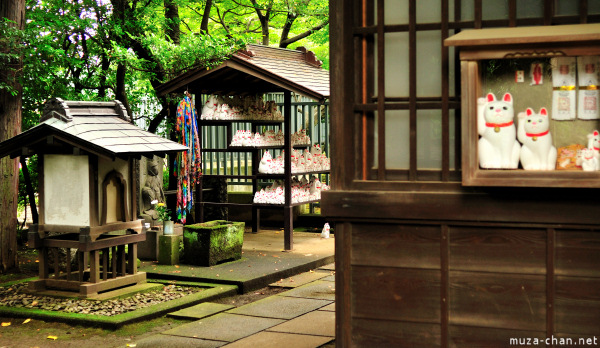
After the cat died, it was buried in the Temple’s cemetery and the Maneki Neko sculptures were made to honor the magical cat. The Temple is located in Setagaya-ku
The legend of Maneki Neko is a reflection of the popularity and importance the cat has played in the history of Japan.
“During the sixth century in Japan the emperor made his cat a noble. In this period there was a strong association with the nobility and the cat, said Dr. Roger Tabor, cat biologist and author of The Rise of the Cat and 100 Ways to Understand Your Cat.”The average person in Japan did not own cats. “The nobles had their cats on leashes in the Heian period,” continued Dr. Tabor. Cats were kept in the nobles’ palaces at this time and not allowed to run free. “In 1603 the Shogun took over in Japan and part of what he did was to take away the symbols of the aristocracy such as the cat. Only aristocrats could have cats before them,” said Dr. Tabor. After this time cats became accessible to the general public.
“At around the same time in 1602, a disaster hit the Japanese economy, which had been built up around the aristocracy who had a huge appetite for silk robes. The silk robes were made by the silk worm which had been hit by an epidemic of rats and so part of an imperial decree was that all the cats had to be set free,” said Dr. Tabor. This was done, so the cats could kill the rats and save the silk worms which were so important to the Japanese economy. Today, cats are extremely popular pets in Japan.
Maneki Neko really represents all our pet cats. As every cat owner knows, their cat beckoned them to take them home and has brought them the good luck and fortune by providing them with love and companionship.
Today, Cats are extremely popular pets not only in Japan, around the world and throughout time. Nothing demonstrates this better than, when the cat becomes part of a country’s culture, history and mythology.
Maneki Neko, the beckoning cat of Japan, which brings good luck and fortune is a perfect example of this.
Often seen in stores and businesses particularly around the front desk or cash register, the Maneki Neko is a very popular lucky charm. This feline figure is said to call in good luck and good fortune.
He typically holds a gold coin or ingot in one hand while beckoning customers into the establishment with the other hand. He has several names: Maneki Neko, The Lucky Cat, The Money Calling Cat, The Beckoning Cat, Money Cat, Fortune Cat.
Legends
Maneki Neko is the subject of a number of legends. Here are three of the most popular, explaining the cat’s origins:
The Temple Cat: This story goes that a wealthy feudal lord was taking shelter under a tree near Gotoku-ji temple (in Western Tokyo) during a thunderstorm. The lord saw the temple priest’s cat beckoning to him and followed; a moment later the tree was struck by lightning. The wealthy man became friends with the poor priest and the temple became prosperous. When the cat died, supposedly the first Maneki Neko was made in his honor.
The Courtesan: A courtesan named Usugumo, living in Yoshiwara, in eastern Tokyo, kept a cat, much beloved by her. One night, the cat began tugging at her kimono. No matter what she did, the cat persisted. The owner of the brothel saw this, and believing the cat bewitched, cut its head off. The cat’s head then flew to the ceiling where it killed a snake, ready at any moment to strike. Usugumo was devastated by the death of her companion. To cheer her up, one of her customers made her a wooden likeness of her cat as a gift. This cat image then became popular as the Maneki Neko.
The Old Woman: An old woman living in Imado (eastern Tokyo) was forced to sell her cat due to extreme poverty. Soon afterwards the cat appeared to her in a dream. The cat told her to make its image in clay. She did as instructed, and soon afterward sold the statue. She then made more, and people bought them as well. They were so popular she soon became prosperous and wealthy.
Thursday 5 January 2012
Elements of Japanese Figurines – Maneki Neko
| Definitions and significance of items Maneki Nekos are often posed with or holding. | |
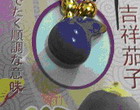 | Brinjal is a purple radish frequently used in stir fries and other meals. It has decorated several Maneki Neko figurines, though it is still fairly unusual. It is a fairly obscure symbol signifying good fortune, plenty and bountiful . |
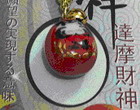 | Daruma is the Japanese name for Bodhidharma, who transmitted Zen Buddhism to China from India. It’s said that he sat in meditation so long that he lost the use of his legs. Daruma have only white eyes when purchased. One fills in the first eye when a resolution or wish is made, and paints in the second eye when the goal is achieved. The Daruma Doll or Wishing Doll is said to have the ability to make wishes come true. |
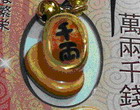 | Koban is a gold coin common in the Edo period or Japan. The denomination of Koban was worth one ryo (think of one ryo of equivalent to roughly one thousand dollars), an early Japanese monetary unit. Most Koban being held by Maneki Neko in modern days, depicts ten million ryo, which is representative of a considerable fortune, financial prosperity, as well as an easy life. |
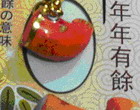 | Fish especially the carp, symbolises strength, courage and determination, associated with the will and strength required to swim upstream. The fish in the paws of Maneki Neko figurines may also symbolise abundance and good fortune, because what could a lucky cat possibly be more than happy other than to have a big, fresh, delicious fish ! |
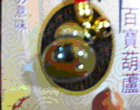 | Hyotan is a hollowed out dried Gourd in which Sake (Rice Wine) and other beverages were traditionally kept. Fukurokuju the god of wisdom and longeivity, is one of the seven lucky gods of Japan. He is frequently posed with a hyotan drinking vessel, which may have led to their being associated with luck. Gourds in general are also considered to ward of evils and bring good luck, which may contribute to Hyotan appearng in the paws of Maneki Neko. |
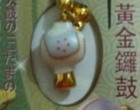 | Uchide Nokozuchi otherwise known as a magic Money Mallet, is a lucky charm that is thought to protect and shield and bring wealth to one who shakes it. It is usually seen in the hand of Daikoku Mantra, the god of wealth and farmers, who was fortunate enough to have coins fall out of his magic money mallet, every time he shook it, but some Maneki Neko figurines were luck enough to get one on their paws too ! |
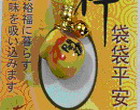 | Money Bag obviously a bag filled with lots of money, symbolising overwhelming of wealth . |
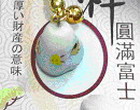 | Mount Fuji symbolises family reunion and support from people around us in time of crisis. |
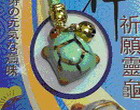 | Tortoise symbolises longevity and healthy. |
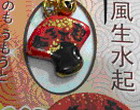 | Prosperity Fan symbolises business or career overwhelming. |
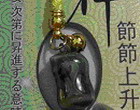 | Bamboo Shoot symbolises ever-growing and sprouting in business, career or education. |
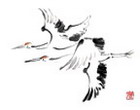 | Red-Crowned Crane symbolises pink of health. |
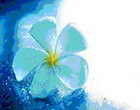 | Flower Petal symbolises good affinity and concrete relationship among people. |
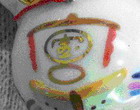 | Treasure Boat symbolises smooth sailing in business, career, love or education. |
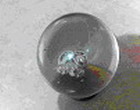 | Crystal ball, gem or a marble can often be found in the paws of more modern Maneki Nekos. it is indicating wealth (in the form of a valuable gem), wisdom (in the form of a crystal ball used by psychics and mystics) |
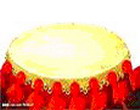 | Drum symbolises overwhelming of customers flood the shop. |
 | Book & Pen symbolises guardian watching over one’s education and academic improvements. |
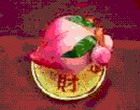 | Peach symbolises one’s achievement in career and love. |
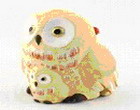 | Eagle is an auspicious symbolism, so called-the fortune bird or night guidance to ward of evils and watching over one’s studies and wisdom. |
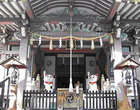 | As word of the events spread, people began placing figures of Cats sitting infront of the windows and entrances of Asian shops, restaurants, homes, temples, casino or offices, believing it would bring in some kind of prosperity into their own lives. |
Wednesday 4 January 2012
Descriptions of the meanings and significance of the different colors and poses of lucky cat figurines
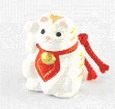 | Right Paw inviting money and good fortune. [per Feng Shui] |
 | Both Paws protecting home or business. [per Feng Shui] |
 | Left Paw inviting customers or people. [per Feng Shui] |
 | Bib and Bell healthiness and material abundance. [per Feng Shui] |
 | Calico Cat traditionally the luckiest cat of all. [per Feng Shui] |
 | Green Cat sometimes health or educations/studies. [per Feng Shui] |
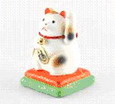 | White Cat purity, positive things to come. [per Feng Shui] |
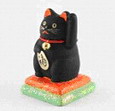 | Black Cat wards off evil and stalkers. [per Feng Shui] |
 | Golden Cat intense wealth and prosperity. [per Feng Shui] |
 | Pink Cat love, relationships and romance. [per Feng Shui] |
 | Red Cat love, marriage and personal matters. [per Feng Shui] |
 | BLUE cats promote intelligence and academic success.Also wisdom and career success. [per Feng Shui] |
 | YELLOW cats beckon for good health, stability, & good marriages. [ per Feng Shui ] |
 | GRAY cats support safe and enjoyable travel & attract helpful people. [per Feng Shui] |
 | PURPLE cats promote prosperity. Also wealth, lifestyle, & opportunity. [per Feng Shui] |
 |
This set of 7 Nekos represents the “Shichifukujin“, also known as “The Seven Deities of Good Fortune” – a group of immortals very popular in Japan. Each member has a different origin, carries a different symbolic item, & represents a different kind of good luck: [1] Ebisu – god of success in all honest labor, carries a lucky “Tai” fish, bringing special luck to fishermen. [2] Daikokuten – god of wealth & prosperity, carries a magic mallet. [3] Fukurokuju – god of wisdom. [4] Bensaiten – goddess of music, arts, beauty, & fertility, carries a Japanese “biwa” mandolin. [5] Bishamonten – god of protection & religious zeal, carries a pagoda of treasures. [6] Jurojin – god of longevity. [7] Hotei – Japanese & the most popular of the 7 - god of contentment & happiness. |
Subscribe to:
Posts (Atom)
















